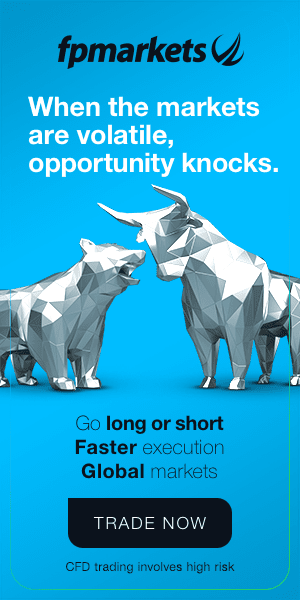Successful foreign exchange trading (or forex trading) involves several skill sets. Understanding Forex spreads and the influence they can have on trades is one of them.
In order to grasp the dynamics behind Forex spreads, knowledge of a trade’s framework is paramount.
The Bid and Ask Price
The Bid price is the value traders can short (sell) the base currency of a currency pair (the base is always expressed as 1 unit). The Ask price, or sometimes featured as the offer price, is the value traders can long (buy) the base currency. The second currency within a quotation is the counter currency or quote currency. It’s the base currency that is bought or sold – the quote currency determines the value of the base currency. The value between the Bid and Ask is known as the Bid-Ask spread or pip spread.
Figure 1.A displays an order window on MetaTrader 4 (MT4), showing Bid and Ask market prices for the EUR/GBP exchange rate. The Ask trades at 0.88148 and the Bid at 0.88130, seen in both the tick chart window on the left and also on the right, under Market Execution. You can, therefore, purchase 1 euro for approximately £0.88.
FIGURE 1.A
Types of Spreads
Fixed Spread: This is self-explanatory – Bid and Ask prices are not dependent on market conditions, rather the spread is set at a fixed value.
Variable Spread: Bid and Ask prices fluctuate in accordance with market conditions. Spreads are often subdued when liquidity is low, though can widen in volatile markets.
Who Determines the Spread?
Forex brokers operating as a market maker, broker routing orders through their dealing desk, essentially make the market. Market makers display prices they’re willing to provide liquidity at, the Bid and Ask price. They determine the spread in this case. Entering long within a dealing-desk broker environment entails buying from broker-fed prices. This broker makes money via spreads – which can be fixed (though are subject to change). Bid-Ask spreads can vary between market makers, though they are usually kept within sensible ranges due to competition.
How Spread Widening Affects Trades
Many traders fail to recognise the effect spreads can have on trades.
Why does the spread increase? A spread is simply the difference between willing buyers/sellers, or in other words, available liquidity. Liquidity is a key determinant behind a spread’s value. For example, a currency pair, although there’s no central exchange in spot FX, has numerous banks quoting prices they’re willing to buy and sell at. Broadly, this determines the spread size.
Where prices are dictated by various market participants and not a market maker, financial instruments do not have fixed Bid-Ask spreads. Higher liquidity tends to imply lower volatility and a tighter spread.
Certain times see spreads increase, such as news data releases, political uncertainty, and natural disasters. This generally only affects existing positions, as fortunately, most traders avoid opening fresh positions in these conditions.
Should an existing position reflect profit and a surprise event hit newswires, causing markets to respond and spreads to widen, a winning position can face liquidation. A long position at 1.1200 on EUR/USD, for example, exhibiting a 10-point stop-loss order at 1.1190, currently trades at 1.1205. The Bid-Ask spread, due to an unforeseen event, widens 20 points, consequently liquidating the position. Remember, The Bid price is the value traders sell, and a protective stop-loss order in a long position is a sell order. Once the Bid price hits the stop-loss trigger, the trade liquidates.
Wider spreads also involve higher trading costs. The spread is the cost of each transaction, not including other fees such as swap or commission. A typical spread of 1 point on a 1 standard lot trade is $10; if the spread widens to 5 points, that’s a $50 expense before the trade begins, hence why traders tend to avoid entering the market when spreads widen.
Can Forex Traders Minimise the Effect of Widening Spreads?
While it is impossible to completely sidestep spread widening, you can consider participating during liquid trading sessions. The London and US sessions typically offer liquid conditions, providing tight spreads. The overlap between London and the US (New York) sessions between 1 pm and 5 pm GMT tends to generate strong price moves.
Another alternative to help lessen the effects of spread widening is to trade liquid currency pairs. According to the BIS Triennial Central Bank Survey April 2019, The US dollar retained its dominant currency status, being on one side of 88% of all trades. The share of trades with the euro on one side expanded somewhat, to 32%. By contrast, the share of trades involving the Japanese yen fell some 5 percentage points, although the yen remained the third most actively traded currency (on one side of 17% of all trades). Traditional major currency pairs, parts of the G10 currency group, such as the EUR/USD, GBP/USD, AUD/USD, and USD/JPY frequently exhibit low spreads. Note each major currency pair contains the US dollar. Avoid exotic currency pairs, those of developing nations, which generally carry large and often erratic spreads.
START TRADING
DISCLAIMER:
The information contained in this material is intended for general advice only. It does not take into account your investment objectives, financial situation, or particular needs. FP Markets has made every effort to ensure the accuracy of the information as at the date of publication. FP Markets does not give any warranty or representation as to the material. Examples included in this material are for illustrative purposes only. To the extent permitted by law, FP Markets and its employees shall not be liable for any loss or damage arising in any way (including by way of negligence) from or in connection with any information provided in or omitted from this material. Features of the FP Markets products including applicable fees and charges are outlined in the Product Disclosure Statements available from FP Markets website, www.fpmarkets.com, and should be considered before deciding to deal in those products. Derivatives can be risky; losses can exceed your initial payment. FP Markets recommends that you seek independent advice. First Prudential Markets Pty Ltd trading as FP Markets ABN 16 112 600 281, Australian Financial Services License Number 286354.









 Access +10,000 financial
instruments
Access +10,000 financial
instruments

